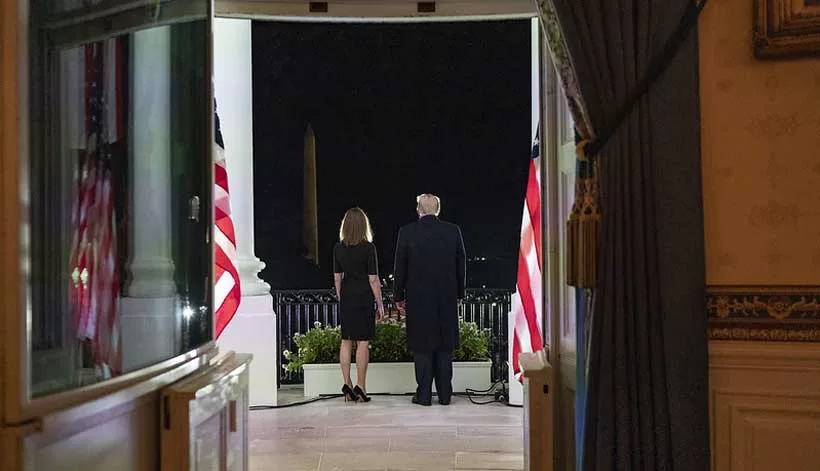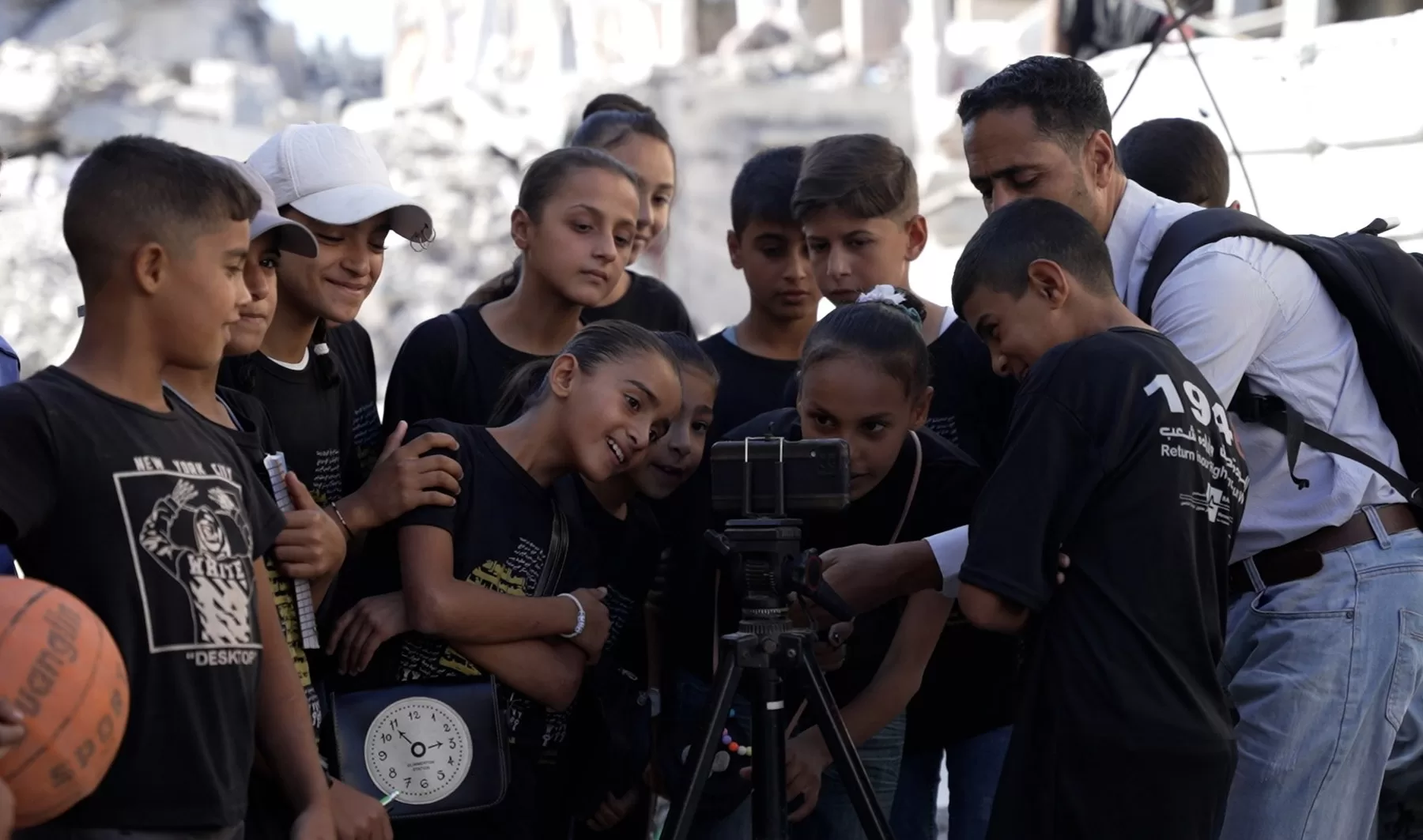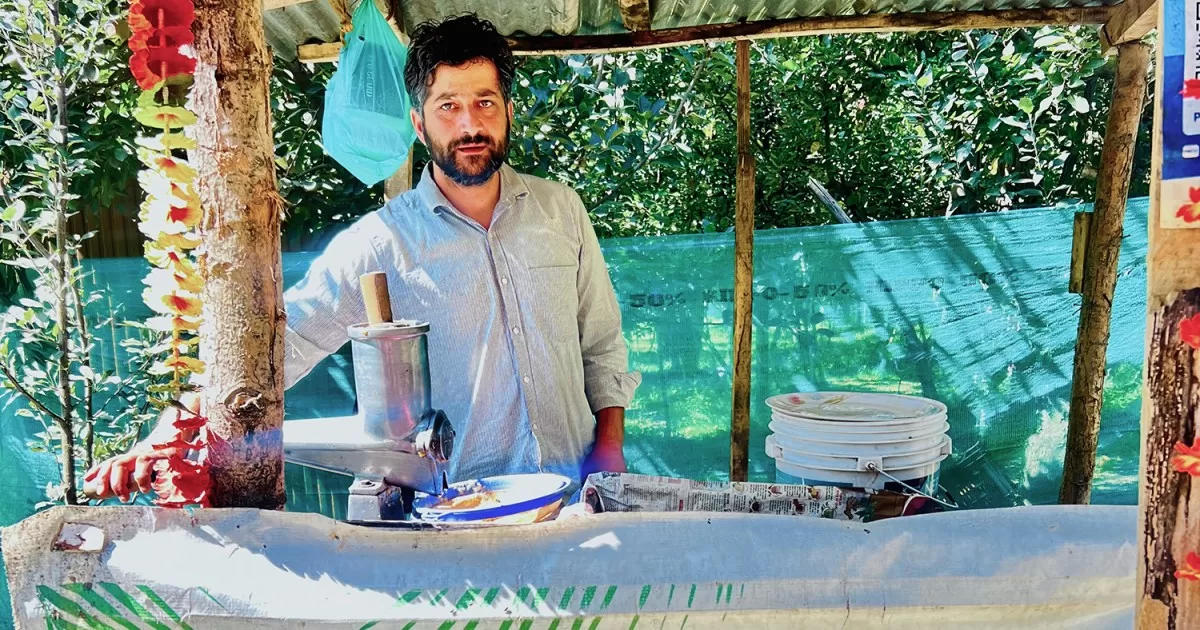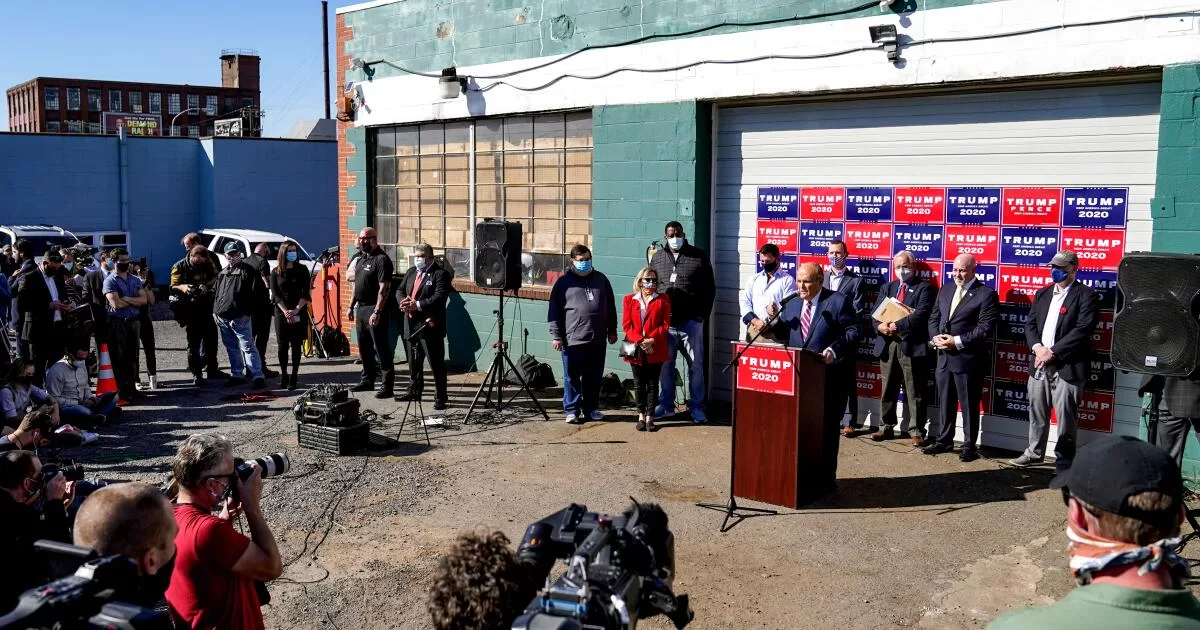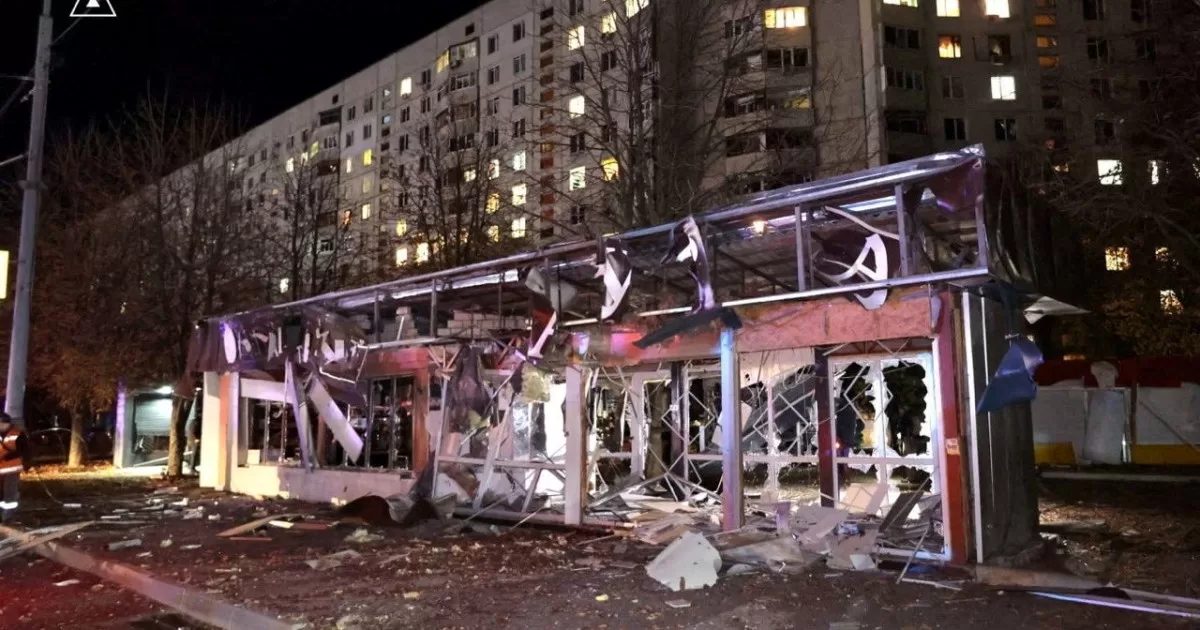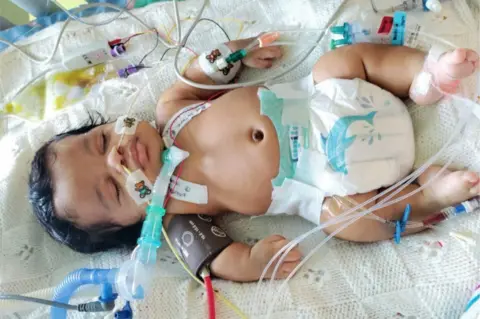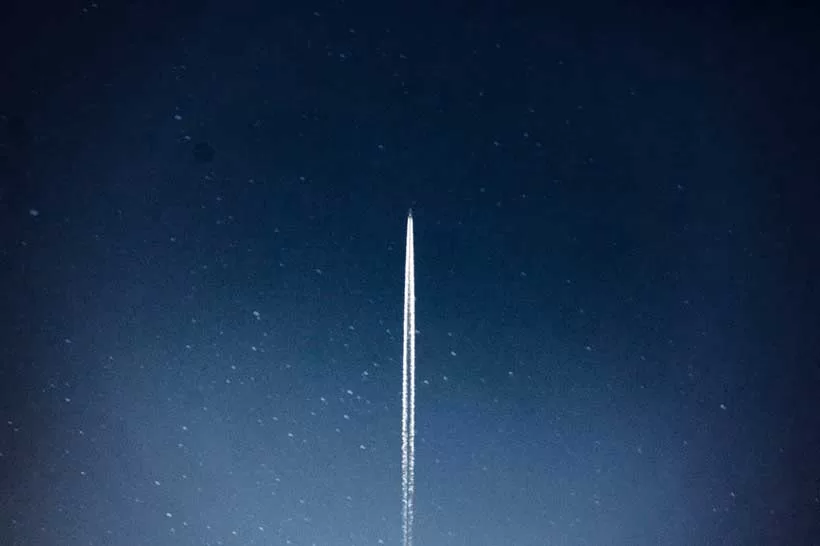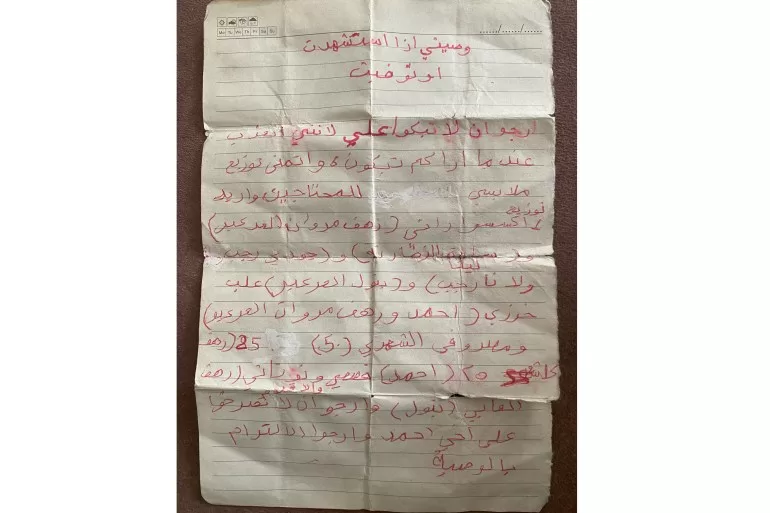Every morning at 7am, Maqsood Ahmad Ganai leaves home to set up a small juice stall by the roadside near his village, Hugam, in the southern Anantnag district of Indian-administered Kashmir.
Hoping to catch the attention of tourists on their way to the picturesque Pahalgam Valley, 29km (18 miles) from Hugam, Ganai stands by his makeshift stall all day, waving at passing cars and offering freshly made apple juice to the travellers.
“Welcome, madam, please come and taste the fresh apple juice of Kashmir,” he says warmly, his voice polite and hopeful, as he opens the car door for three female tourists who have arrived from the western Indian state of Maharashtra.
A plastic cup of instantly made juice costs 100 rupees (a little more than $1). As Ganai hands over the cup, he explains to his customers how it is brimming with essential vitamins, minerals and antioxidants.
Ganai, 38, holds a doctorate in botany from the University of Kashmir, the region’s oldest and largest academic institution, and has nearly 10 years of teaching experience on a temporary basis at a government-run college.
Despite his qualifications and experience, Ganai has struggled to secure even a temporary teaching position in the last five years.
When Prime Minister Narendra Modi’s government scrapped the limited autonomy of Indian-administered Kashmir and brought it under New Delhi’s direct control in 2019, it claimed the move would bring economic prosperity and more investment in the region.
But the situation on the ground belies that claim as jobs have shrunk and businesses have witnessed a downward trend. The current unemployment rate in the region is 18.3 percent, according to government data – twice the national average of 9 percent and the region’s worst in decades, according to the main opposition Congress party.
In the year 2018-2019, just before the partial autonomy was removed, the unemployment rate in Indian-administered Kashmir was 5.1 percent, according to the Indian Ministry of Statistics and Programme Implementation.
An unemployment rate of 18.3 percent in a region of 7 million residents translates to more than a million jobless youth like Ganai, who have been forced to adopt desperate measures, like setting up a roadside stall, for survival.
The situation is further compounded by years of political upheaval and violence in the Muslim-majority region, where an armed rebellion against Indian rule has persisted for more than three decades, killing tens of thousands of people, most of them civilians.
The dispute began in 1947 when the Himalayan region of Kashmir was divided between India and the newly formed nation of Pakistan after British rule ended in the subcontinent. Both the nuclear-armed neighbours claim the region in its entirety and have fought three wars over it, making it one of the most militarised areas in the world, with more than six million soldiers on the Indian side.
Because of the dispute with Pakistan, the region was given partial autonomy under Article 370 of the Indian constitution, which gave the Kashmiris exclusive rights over local government jobs, land ownership, and access to education in state-run institutions.
But when Modi’s government abrogated the article in 2019, its decision was imposed through an unprecedented months-long security clampdown, severely disrupting normal life and the region’s mainstay of tourism. It also raised fears of a demographic change among the residents, as new laws and policies allowed non-locals to apply for jobs in Kashmir, buy land, or even settle in the region.
For the Kashmiris, the shift in their status has raised serious concerns over limited employment opportunities, particularly with the government, the region’s largest employer. More than 500,000 Kashmiris were working for it before the 2019 move.
‘I hide behind trees due to shame’
But with no option amid a mounting job crisis now, Ganai said he is forced to sell juice near his in-laws’ apple orchard to support his family, which includes his mother, his wife and a six-year-old son.
On a good day, he earns 100-500 rupees (about $1-$6), but there are days when no customer stops by his stall.
Ganai said he even tried to seek work through government programmes such as the Mahatma Gandhi National Rural Employment Guarantee Act or MGNREGA, a landmark 2005 law that guarantees 100 days of work to every Indian.
But even a MGNREGA job, mostly involving unskilled manual labour, was not easy for Ganai due to his “overqualification” as a PhD.
“They said I was overqualified for the manual work. It frustrated me. That’s why I decided to sell juice so that I can remain busy and not lose my sanity,” Ganai told Al Jazeera. “My situation is not unique as many educated youth face the same economic struggles. We are left with few options to sustain ourselves.”
Despite spending some years in the central Indian state of Madhya Pradesh for his education and publishing several research papers, Ganai’s dreams of a stable career have faded.
Now he stands every day at his stall for 12 hours, returning home in the evening with aching feet and a sore back. “Seeing my situation, my mother cries thinking how much I had worked hard to study and become something,” he told Al Jazeera.
Ganai confessed that he often sees his former students pass by his stall. “I hide behind trees because I am too ashamed to face them,” he said.
Ganai’s wife Rubia also holds a master’s degree in sociology from a Kashmir-based university, but is jobless like her husband, despite trying for a teaching or a social work job. Together, they face the daunting challenge of providing for their son amid growing economic insecurity. “I feel frustrated every day,” said Ganai.
‘Diminished opportunities’
Many Kashmiris fear that outsiders from other parts of India, attracted by the scenic region’s temperate climate as opposed to north India’s brutal heat, will take up jobs there, leaving the local youth with fewer options.
“Kashmiri youth have grown up in turmoil. Their sense of diminished opportunities is compounded by a growing political uncertainty. It is a precarious economic situation exacerbated by limited development,” Muhammad Maqbool, a farmer from southern Kashmir’s Tral village, told Al Jazeera.
He said young Kashmiris have felt politically and economically marginalised since 2019. “My children feel frustrated over the growing competition and a shrinking sense of control over their futures,” he said about his two daughters, aged 23 and 25, both with master’s in the sciences.
“We have no opportunities to thrive in our homeland,” Nahida Jan, 29, a social science research scholar from the region’s main city of Srinagar, told Al Jazeera.
Like Ganai, she fears her future is bleak as there is no job security in Kashmir. “The selfish policies of this government have jeopardized our future,” Jan said, adding that the government is not concerned about the unemployed in Kashmir.
In recent years, sectors such as tourism, handicrafts and agriculture, the lifeblood of Kashmir’s economy, have been severely affected by the geopolitical tensions.
Earlier this month, the region elected its first government in a decade, with the pro-India National Conference party forming the government. The Kashmiris are now watching how Chief Minister Omar Abdullah would address their economic aspirations. After assuming power, Abdullah said he would make addressing the unemployment crisis a priority.
During his visit to Kashmir on September 19, Prime Minister Modi called the just-concluded elections a “celebration of democracy” and pledged to restore the region’s statehood, without setting a timeline.
A government official, speaking anonymously to Al Jazeera because he was not entitled to speak to media, said while tourism has shown some signs of recovery, industrial growth in the region remains sluggish. He said the government’s 2021 Industrial Policy, aimed at attracting investment, has so far generated limited results.
“There is a disconnect between policy promises and real-world outcomes,” the official said. “The government’s claim of sectoral improvement doesn’t seem to align with employment generation on the ground.”
A report by the Indian Express newspaper in December 2023 said Kashmir received an investment of more than $300m, a figure far lower than the claims repeatedly made by the regional administration of securing $10bn worth of investment since August 2019.
Ashok Kaul, spokesman for Modi’s Bharatiya Janata Party (BJP) in Indian-administered Kashmir, told Al Jazeera the federal government brought development to the region, which, he alleged, it had “lacked for decades”.
“We have been trying to generate employment and the process is still ongoing. Industries have started and this will increase employment gradually,” Kaul said. “New Delhi is supporting all the developmental policies in Kashmir.”
‘Never seen such bad times in life’
On the other hand, Muhammad Ashraf, a 60-year-old mason from Bandipora’s Kaloosa village, hopes the new regional government will bring economic relief.
“My son has an MBA but works as a salesman for 5,000 rupees a month ($59),” Ashraf told Al Jazeera, adding that all his three children, including a daughter, are jobless despite having college degrees.
“Whatever you hear about the so-called development in Kashmir in media is all fake,” he said as his Hindu neighbour, Chaman Lal Kaul, a 70-year-old retired government teacher, nodded in agreement.
“There is a flood of joblessness,” said Kaul, adding that the region has been pushed further to the margins since 2019 as an unelected local administration, backed by New Delhi, allegedly showed no interest in addressing the unemployment crisis.
In the absence of large industries and private businesses, most residents in Indian-administered Kashmir opted for government jobs before the region’s status was changed by New Delhi. Now, the unemployed there accuse the federal government of “political machinations to broaden its electoral base” by changing a quota system in 2023.
The change increased the share of reserved vacancies in government jobs to more than 60 percent for different social sections, such as the protected nomadic tribes, less privileged castes among Muslims and Hindus, and others in poverty, leaving a majority of people in the region to compete for less than half of the available positions. Before 2019, 50 percent of jobs were reserved for so-called “general” residents.
“The BJP’s political calculations for electoral gains have thrown a majority of the population under the bus, jeopardising the career prospects of thousands of educated youth,” said Waseem Mir, a PhD scholar from Srinagar.
“While affirmative action is essential to support underprivileged groups, its scope should align with their representation within the population. Excessive reductions in job opportunities for the majority risk pushing more individuals into poverty, ultimately increasing the number of underprivileged people and undermining the very purpose of affirmative action.”
The BJP says the changes are aimed at bringing “long-awaited justice” to the communities in remote and underdeveloped areas of Indian-administered Kashmir.
‘No investment in sectors that generate jobs’
Experts also blame Kashmir’s surging unemployment crisis on what they call “the misplaced priorities” of the government, with much of the financial capital directed to sectors that create limited job opportunities.
When Modi visited the region in March this year, he announced a slew of projects worth $777m, which he said will boost agro-economy and tourism. However, experts say those projects do not necessarily contribute to local employment generation.
“While governments often announce developmental projects like roads and tunnels, those do not necessarily create jobs. Creating employment avenues needs increased spending on local socioeconomic sectors like tourism and agriculture,” said economist and author Nisar Ali.
As a result, said Ali, the region has a unique unemployment problem: a large number of educated youth with no jobs to match their skills.
“We are a labour shortage economy, with 700,000-800,000 workers from other states filling construction jobs while our youth remain jobless,” he told Al Jazeera. The reason, he said, was that many Kashmiri youth are educated, but there is a mismatch between their qualifications and available jobs.
“They often seek white-collar jobs, but the local economy lacks the infrastructure and opportunities to accommodate them, pushing many to remain unemployed or seek jobs outside the region. Migrant workers, often from states like Bihar, Uttar Pradesh and Jharkhand, are employed in sectors like construction, agriculture, and small-scale industries, making them more attractive to employers for unskilled and semiskilled labour,” said Ali.
That is why, according to Ali, Kashmiri youth often opt for what he calls “stress employment”, a phenomenon where educated individuals work in underpaid jobs, a trend also common in other conflict zones such as Palestine or Kosovo.
Back at his juice stall, Ganai has an added problem. “Even in this kind of work, there’s a lot of competition,” he says, as he beckons another customer.



